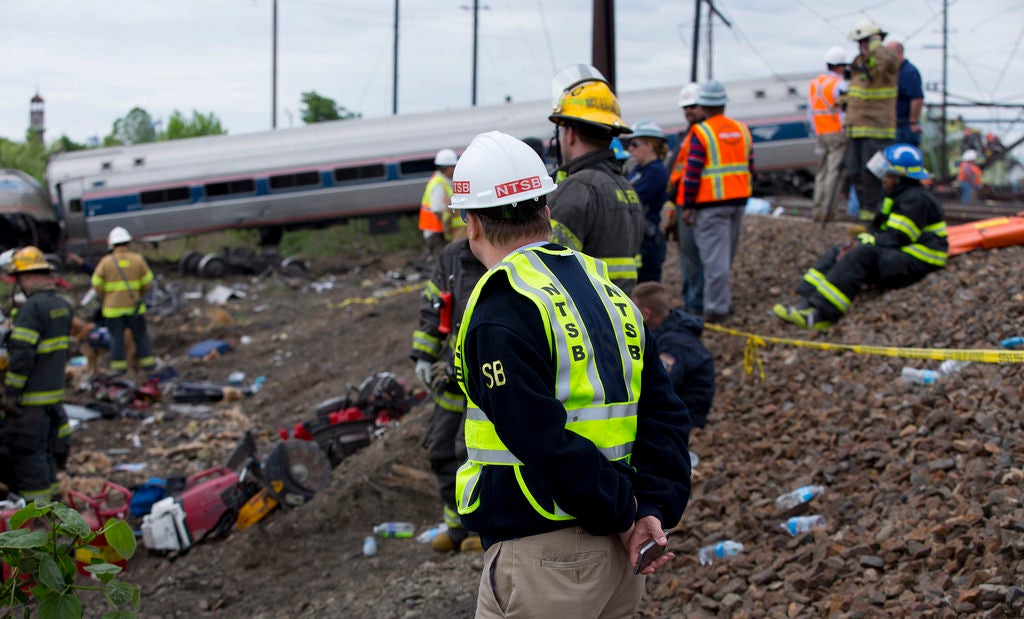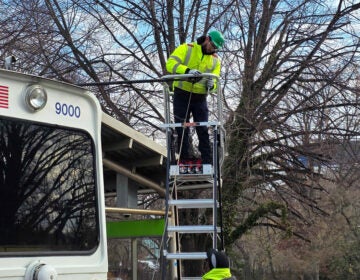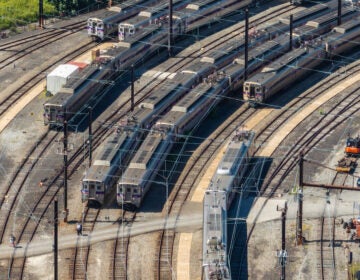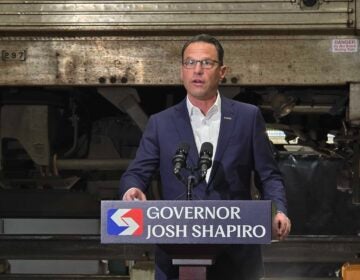Unlike most railroads, SEPTA and Amtrak on pace to implement Positive Train Control by end of year deadline

The Federal Railroad Administration released a status report on implementation of Positive Train Control (PTC) safety technologies in advance of a December 31, 2015 deadline set by Congress. The status report showed that SEPTA was one of the few railroads among the 41 under the mandate that’s on schedule.
According to spokeswoman Jerri Williams, SEPTA expects to meet the deadline, although: “it may be a photo finish.”
Amtrak is also on schedule to implement PTC by the end of the year along its Northeast Corridor, its busiest line. Tragically, this implementation is coming too late for the victims of the Amtrak 188 derailment in May. Eight passengers died and dozens more were injured when the train, speeding at over 100 miles per hour in a 50 miles per hour zone, derailed heading northbound into a curve in Northeast Philadelphia. PTC was installed on the southbound tracks, but not northbound; it’s believed that PTC would have prevented that crash.
According to the FRA report only eleven of the 41 railroads mandated by the law are on pace to have PTC implemented by the December 31, 2015 deadline. Amtrak has installed PTC on some lines, including the Keystone line between Philadelphia and Harrisburg, and expects to have PTC fully implemented along the Northeast Corridor; some of its other routes, however, won’t see PTC implemented until 2018.
The FRA report blamed the widespread delays in installing PTC in most systems on a lack of implementation funds. “FRA has long stated that a lack of public sector funding may result in unwanted delays in fully implementing PTC, especially on commuter railroads,” read the report.
“Congress has not provided a guaranteed, reliable revenue stream for implementation on commuter railroads.”
The day after Amtrak 188, the House Appropriations Committee voted to cut Amtrak funding.
Unlike many of its lagging peers, SEPTA dedicated a ton of funding to PTC. In fact, SEPTA has outspent Amtrak on PTC implementation, having allotted $239 million compared to Amtrak’s $111 million.
Difficulty in obtaining the necessary wireless spectrum has also delayed many commuter rail lines, said the FRA report. NJ Transit, for example, does not expect to obtain the necessary spectrum until July 2016, according to the report.
SEPTA didn’t face any spectrum problems, and thanks to the passage of Act 89 in 2013, which doubled the authority’s capital budget, it had funds available to invest in PTC.
The FRA report also said that the agency would fine non-compliant railroads that missed the deadlines. Daily penalties range from $5,000 to $16,000 for violations, and go up to $25,000 for willful violations, for instances where the FRA determines that the noncompliant railroad didn’t even make a good faith effort to implement PTC in time. Acting FRA Administrator Sarah Feinberg recently told a congressional committee that the agency intends to assess fines, absent Congressional action to extend the deadline.
According to the FRA report, there have been 145 freight, commuter and transit railroad accidents over the last 46 years that would have been prevented by PTC. An estimated 300 lives would have been saved and over 6,700 injuries avoided.
PTC works by allowing computer systems to pinpoint the location and speed of a train and then automatically stop a train that was going too fast or was too quickly approaching a stopped or slow train in front of it.
PTC is an upgrade over the Automatic Train Control system used currently on most Amtrak lines, including where Amtrak 188 derailed. In these ATC systems, automatic speed “enforcement” of speed limits is unavailable except along stretches of tracks where limits are very low, such as entering or exiting a station.
Following a deadly crash in 2008 on Los Angeles’ Metrolink, Congress passed the Rail Safety Improvement Act, which required all freight and intercity commuter railroads to implement PTC systems.
The PATCO high speed line, which operates in Philadelphia and a handful of South Jersey towns, has been equipped with ATC for decades. PATCO’s trains do not fall under the Congressional mandate, which only requires freight and intercity heavy commuter rail to implement PTC systems. Subways, trolleys and light rail lines aren’t required to implement PTC.
WHYY is your source for fact-based, in-depth journalism and information. As a nonprofit organization, we rely on financial support from readers like you. Please give today.






